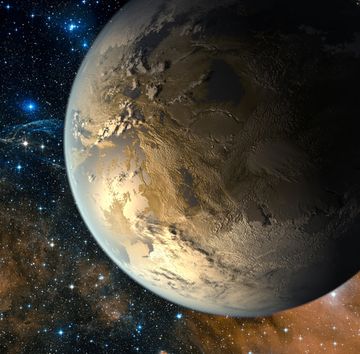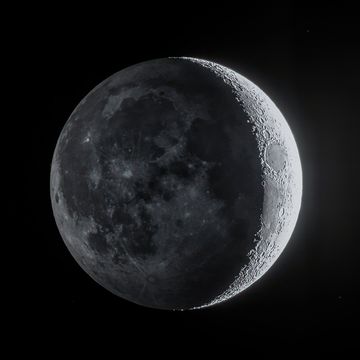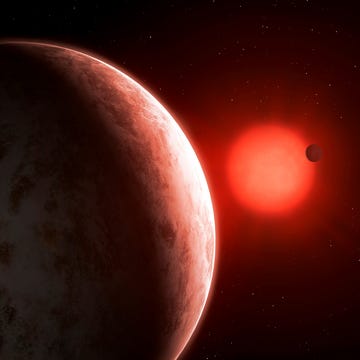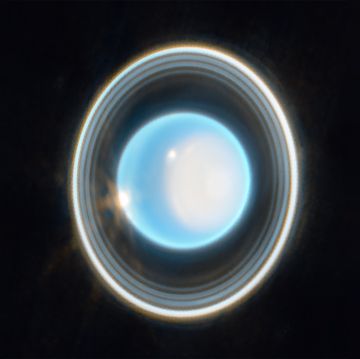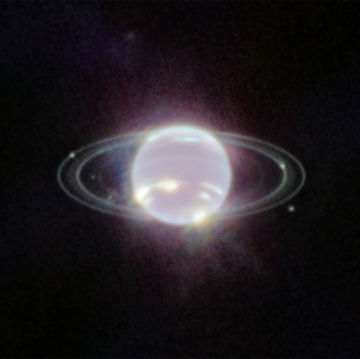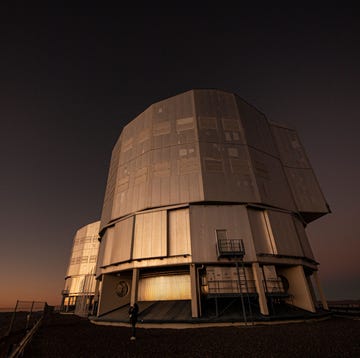Last week, scientists announced in a study in Nature that Ceres, a dwarf planet in the asteroid belt, is spewing water vapor out into space. In fact, this big ball of rock and ice might hold more water than Earth does.
It's a fascinating discovery. Astronomers have knows about Ceres since 1801 (when it was declared a planet, a classification that was retracted a half-century later) without knowing it contained so much water. And the find comes at a crucial time for exploration of Ceres' home, the asteroid belt.
Over the next 2 years, NASA's Dawn mission, which has already visited big asteroids such as Vesta, will arrive at Ceres to map the dwarf planet's surface. And the ESA's (European Space Agency) Rosetta mission, which just emerged from hibernation, will chase a comet as it approaches the sun. While the two missions have different objectives, both have the potential to tell us more about where all the water in our solar system came from.
Seeing More Clearly
Before last week's announcement, water vapor hadn't been conclusively found in the asteroid belt, though scientists have been looking for it for a long time. The problem was that previous instruments just weren't sophisticated enough to pick up the faint signal from that area of space.
The Herschel Space Observatory, which was used to make the discovery, was a large infrared telescope with three spectrometers that allowed it to study the origins of the universe as well as the composition of distant planets. Herschel was launched in 2009 but shut down in 2013 when it ran out of helium, which allowed the scientific instruments to function. But before the observatory went kaput, Michael Küppers of the ESA, the lead author of this new study, and colleagues focused Herschel on Ceres. The first time they looked, they didn't see any sign of water vapor; after a few more tries they saw the signal they'd been looking for.
When it comes to planetary science, "things are moving fast, and one of the reasons is telescopes have gotten really good," says Carol Raymond, deputy principal investigator of the Dawn mission.
Herschel doesn't "see" water coming off Ceres; it measures it in a more roundabout way. Light passing through different molecules affects light in distinct ways, and these can be measured. Scientists have figured out which frequencies of light correspond to which molecules, like water, which allows them to determine what the atmospheres of distant planets are made of. In this case the team picked up on a small dip in the area of the light spectrum that corresponds to water vapor, indicating that it was there.
A Witness to History
While there are lovely artist's impressions of Ceres enrobed in a cloud of water vapor, the actual amount coming off the dwarf planet is much smaller than could be photographed. Küppers's teams measured water vapor coming off Ceres at a rate of about 13.2 pounds per second. "That's a very low activity level compared to comets, which have a lot more outgassing," says Seungwon Lee, a NASA scientist who helped with the water vapor models at Ceres. "It gives a whole new view of how the solar system was formed."
The discovery of water vapor on Ceres means that planetary scientists have another destination for possible astrobiology-based missions to seek out new life. "It clearly puts Ceres in the same category as Europa and Enceladus as candidates for life," Raymond says.
The find could also speak to some of the big questions in planetary science, like how our solar system formed and why Earth has water. "Ceres and Vesta [Dawn's other mission target] just happened to be lucky, and got left behind," Raymond says. "They're witnesses to the solar system's history."
Around the time Jupiter formed, approximately 4.5 billion years ago, the solar system was in a state of total upheaval. Objects like Ceres were coming and going between the inner and outer solar system, smashing into planets and each other, making it a particularly destructive period of growing pains. Some scientists think that during this time, large icy bodies slamming into Earth could have delivered water to our planet and made it what it is today.
"Why does Earth have all that water? Was it just in the Goldilocks zone, or was that all just delivered from the outer solar system? That's a burning question in planetary science," Raymond says.
The Dawn spacecraft is set to arrive at Ceres in March 2015. It will be able to map the surface of the dwarf planet and take a closer look to check for evidence of cryovolcanism, or ice volcanoes. Because the spacecraft will be approaching at a time when Ceres is far away from the sun, it's doubtful that it will be able to photograph any water vapor erupting from the surface. But the Dawn team will get a better idea of what the areas where the water vapor was detected look like.
The Snow Line
How does Ceres still have so much water? For one thing, Raymond says, it's unusual in that the dwarf planet hovers right at the edge of what planetary scientists call the snow line. "It's essentially the point where solar heating has diminished to the point where water is stable," Raymond says. Because Ceres is located past the snow line, it would not have lost as much water to space as Earth has, and it was able to keep any ice that it happened to acquire floating around in that part of the solar system.
Like Earth, Ceres is (mostly) round. And scientists think that, also like our home planet, it has both a core and a convecting mantle. But Ceres' anatomy is vastly different from Earth's. During the early formation of Earth, some of the rocky, heavy materials that make up our planet melted. The heaviest bits, like iron, were therefore free to sink to the center of the rapidly accumulating planet. Today we have a solid iron core and a convecting mantle of molten rock, with a thin, solid, rocky crust. Because the much-smaller Ceres likely never went through the melting that early Earth did, it never would have had the chance to develop the same kind of dramatic differentiation in its rocks.
Scientists think that eventually the rocky parts of Ceres sank toward the center of the dwarf planet and left a large, icy mantle, coated on the surface with whatever rocky remnants migrated upward from the core or were deposited by passing asteroids.
Water, Water Everywhere
Lee is working on the Rosetta mission to study comet 67P/Churyumov-Gerasimenko. The Rosetta spacecraft, launched in 2004, will finally rendezvous in August with the comet it has been chasing for the past 10 years. It will shadow the ice ball for the next year-plus, taking measurements of the comet and even sending a lander down to its nucleus.
Both Rosetta and Dawn are likely to provide more information about the origins of our solar system, and the role of ice (as water or otherwise) in planetary bodies. Taken together with the happy coincidence of Herschel's discovery, it's looking like an exciting time for the planetary sciences.
"Even when [Dawn] got funded, we didn't know half this stuff about Ceres," Raymond says. "We knew it was round, but now it's coming into focus, and we're going to be there."



